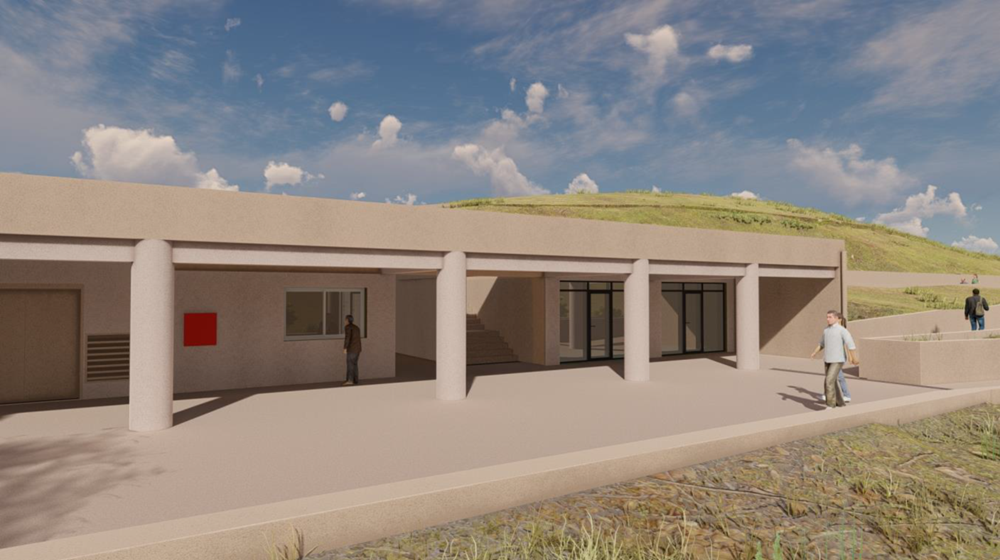
The Ministry of Culture is proceeding with the organization of a permanent archaeological exhibition at the burial mound of Mikri Doxipara-Zoni, in Orestiada, in the Regional Unit of Evros.
The Doxipara mound is a unique treasure trove of knowledge, as it contains all the practices related to the burial rituals of the upper social class of Roman Thrace: From the cremation of the dead and the sacrifice of horses and dogs along with their master, to the offering of entire chariots, the performance of post-mortem rituals, and the erection of mounds.
The Minister of Culture, Lina Mendoni, stated: “The burial mound of Mikri Doxipara-Zoni is a unique monument. It is the largest mound from the imperial period in the region and the only one that contains such well-preserved wheeled vehicles. Its excavation, which began in 2002, revealed five carriages, human and animal burials, and a wealth of organic materials, providing a unique insight into the burial rituals of the upper social class of Roman Thrace. The permanent exhibition will be housed in a specially designed protective building with a vaulted roof that represents the boundaries of the mound. I would like to express my sincere gratitude to my friend, Regional Governor Christodoulos Topsidis, and the Regional Management Authority for their long-standing excellent cooperation with the Ministry of Culture. The aim of the museological and museographic study is to create a space that will give visitors the feeling that they are inside a burial site, where silence and respect for the dead prevail. At the same time, visitors will be able to experience and understand important aspects of the burial ritual of the tumulus. The museum space is expected to contribute significantly to the promotion of the cultural heritage of Evros and the wider region of Eastern Macedonia and Thrace.”
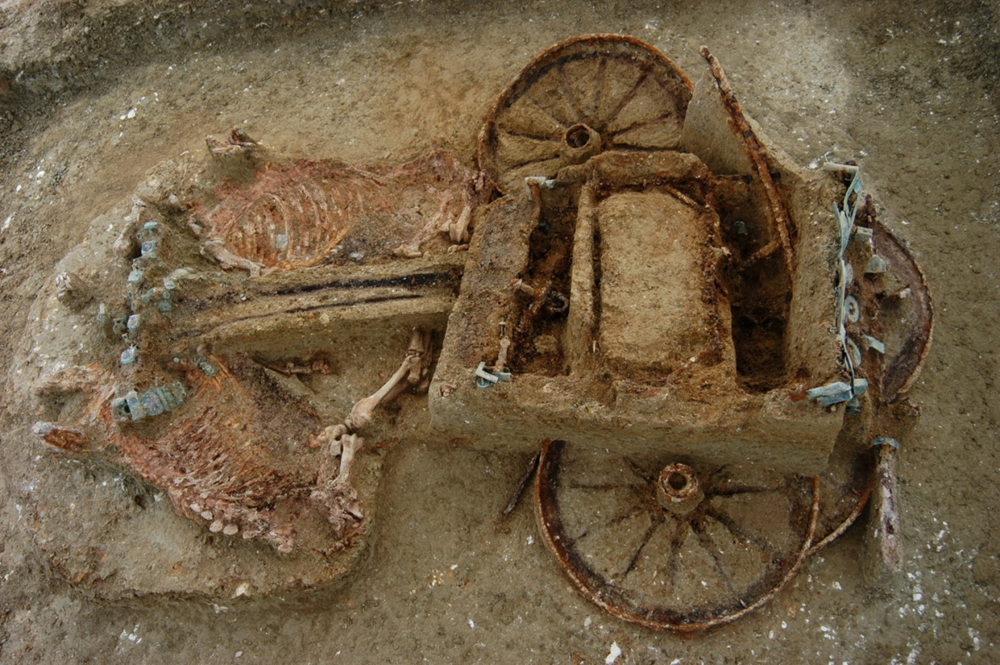
The basic principle behind the presentation of the burial complexes is to preserve the excavated image of the cremation pits, chariots, and horses as an unbroken whole. The exhibition displays the skeletal remains of 15 horses and a dog—an indication that the owner of the chariot was involved in hunting—as well as approximately 250 antiquities found in the tomb. The representation of cremations and burials is the dominant theme of the Museum. The movable archaeological finds from the excavation include numerous grave goods, metal carriage parts, decorative elements from horse tack, and organic materials. The medical toolkits of Doxipara are internationally the best preserved of their kind from imperial times.
The exhibition narrative is structured in five sections, with rich visual and multimedia material. The first section provides a necessary introduction to the monument’s space and time. Sections 2-5 develop the themes: “Who were the people buried in the Doxipara Tumulus?”, “Carriages in the ancient world: Vehicles with many meanings,” “Dying in Thrace. Burial rituals in Roman times,” and “The last person buried in the Tumulus was a woman.” The exhibition will be accessible to people with disabilities and visitors with visual impairments.
The museological principles of the exhibition are based on the creation of a clear and simple narrative path, as well as on ensuring the appropriate conditions for the preservation, protection, and promotion of the antiquities. The central core of the exhibition is arranged on two levels, the ground floor and the first floor. The ground floor features a multipurpose space for lectures, events, and screenings. The western part is designed as an exhibition space and the eastern part as a storage area. The building’s electrical and mechanical installations are located on the first floor. The project includes landscaping the surrounding area, with access for people with mobility issues, parking spaces, and auxiliary facilities, so that it can accommodate a large number of visitors and function as an important center for culture and research.
The excavation of the burial mound of Mikri Doxipara-Zoni began in 2002, under the direction of Diamantis Triantafyllou, bringing to light four cremation burials with numerous grave goods, remains of offerings, five chariots with their harnesses, and two horse burials. Archaeological data date the site to between 100 and 150 AD. The practice of burying chariots and horses alongside their deceased owners is found in many areas of Europe and Asia. Efforts to protect and promote the mound began in 2004. In 2020, a study for the conservation and restoration of the finds was approved. In 2021, the project was included in the Operational Program “Eastern Macedonia and Thrace 2014-2020” and the construction of the museum shell began. In 2024, the museological study for the burial mound was approved. In 2025, the museographic study was approved. The archaeological site with all its infrastructure is scheduled to be completed in 2027.

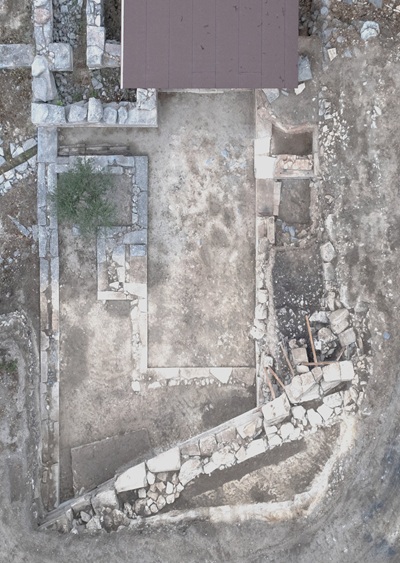
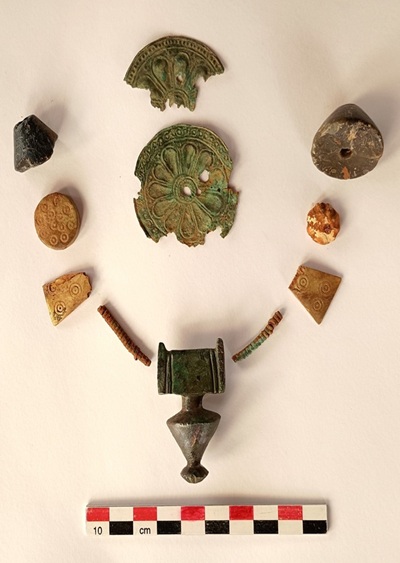
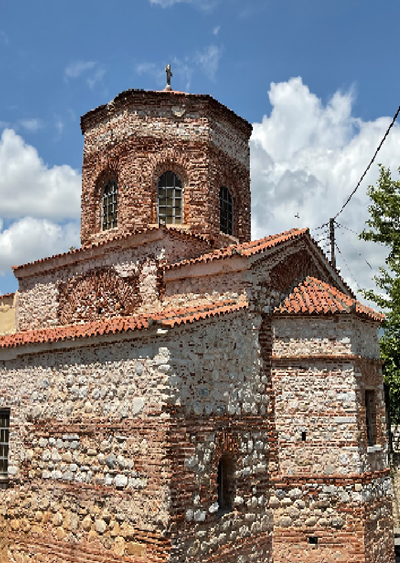
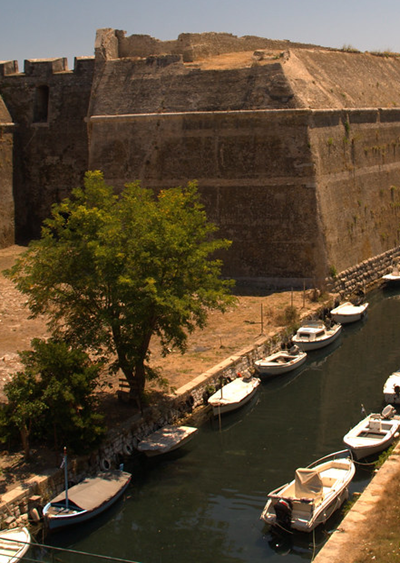


Leave A Comment